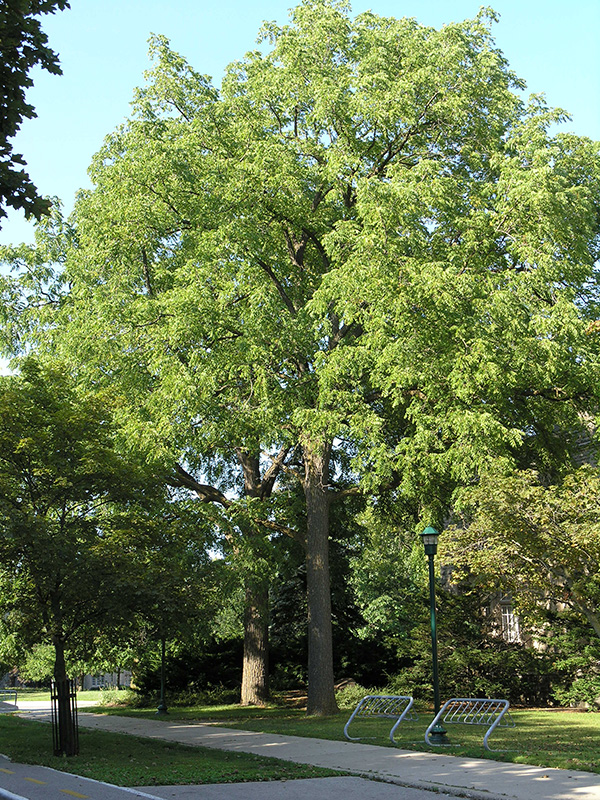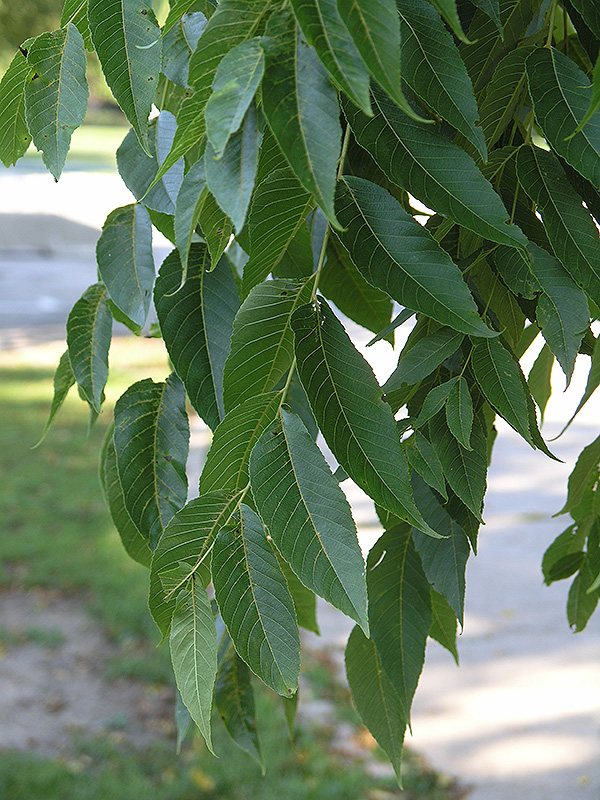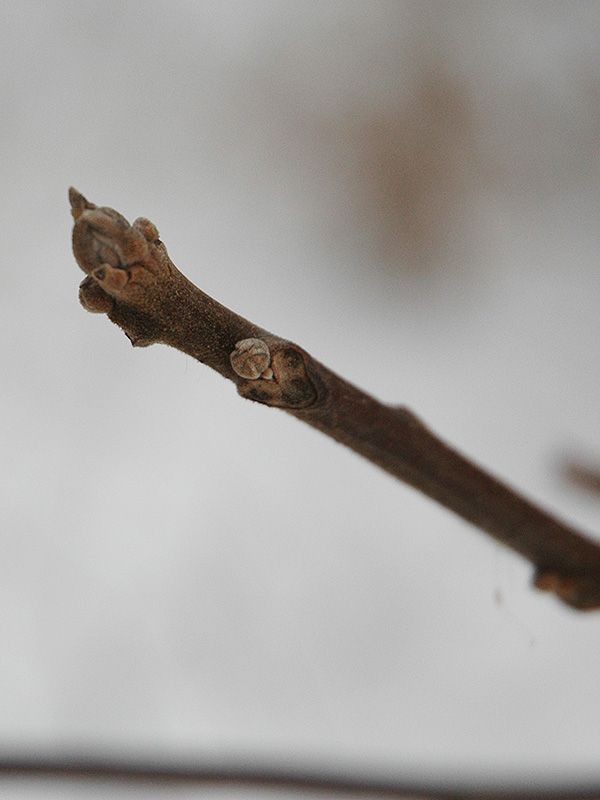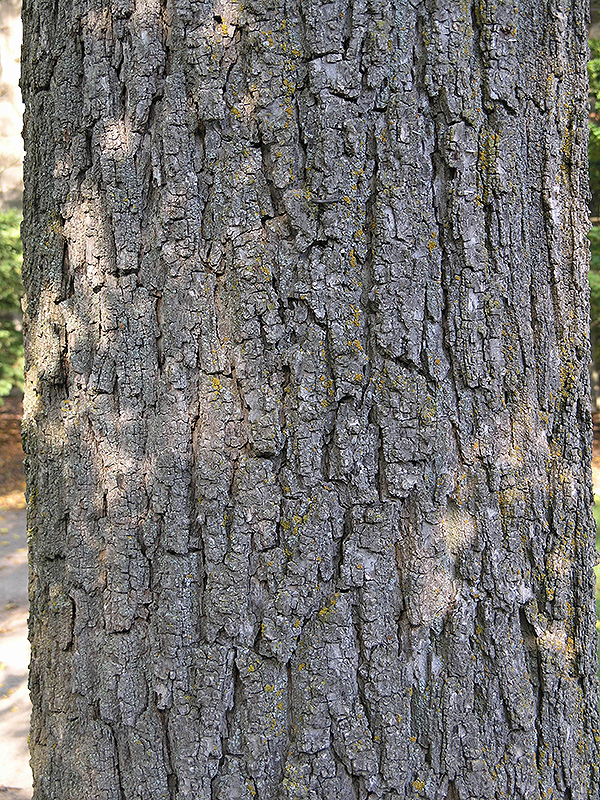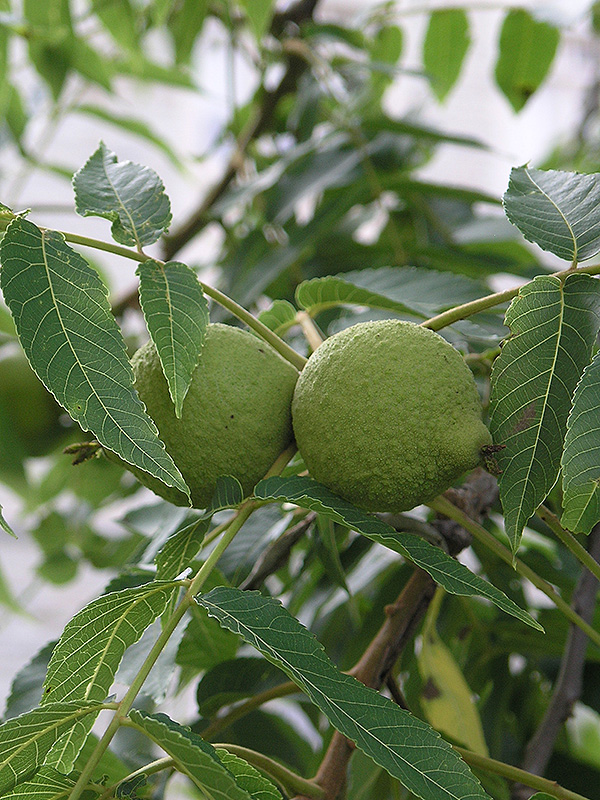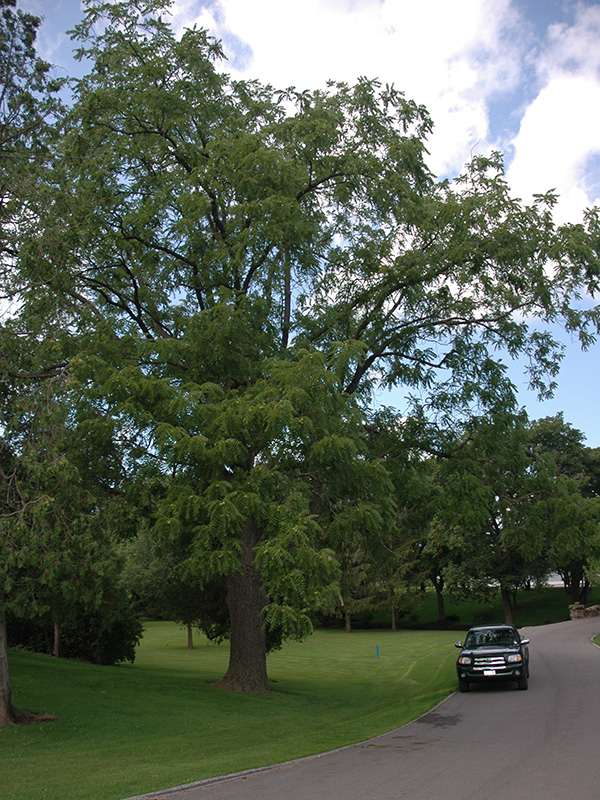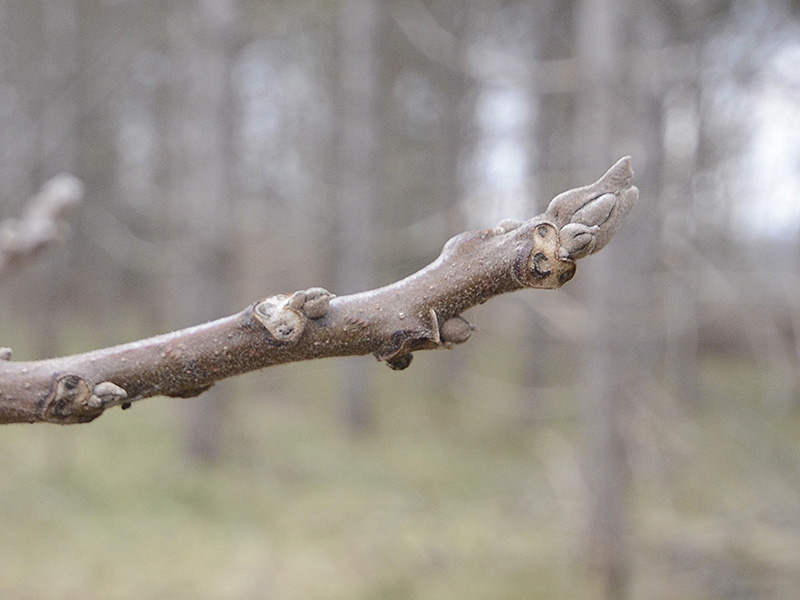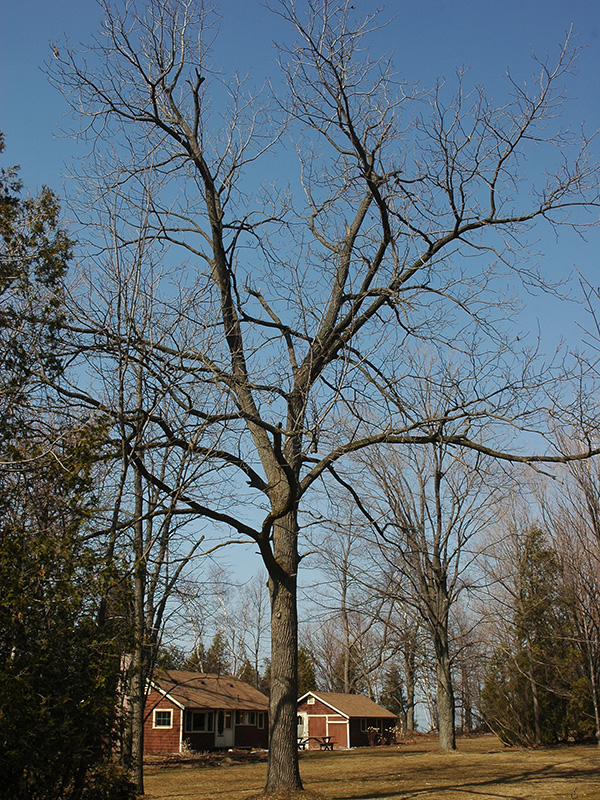| General Description | Juglans nigra or Black Walnut is a very common tree in southern Ontario, Canada and easily grown from harvested nuts. It is not widely available in the trade. |
| ID Characteristic | Large, green-husked fruit that releases a soapy scent. |
| Shape | Rounded crown. |
| Landscape | Has limited use since it emits a substance called juglone that has fungicidal and antibiotic properties and retards the growth of many plants. However, there are many plants that can tolerate juglone. It is a stately, long-lived specimen and can, as in the Cuddy Gardens in Strathroy, provide an anchor to the landscape. The tree is quite messy when in fruit. |
| Cultivation | An easy tree to cultivate, requires good loamy soil that is well-drained. |
| Notable Specimens | The University of Western Ontario, Canada.
The A.M. Cuddy Gardens, Strathroy, Ontario, Canada. |
| Habitat | Low-lying ground such as flood plains. |
| Fruit Description | The nut is enclosed by a green husk, overall larger than a golfball. Fruits in cycles, usually every second year, producing copious amounts. Can be quite messy, staining pavement and other surfaces. |
